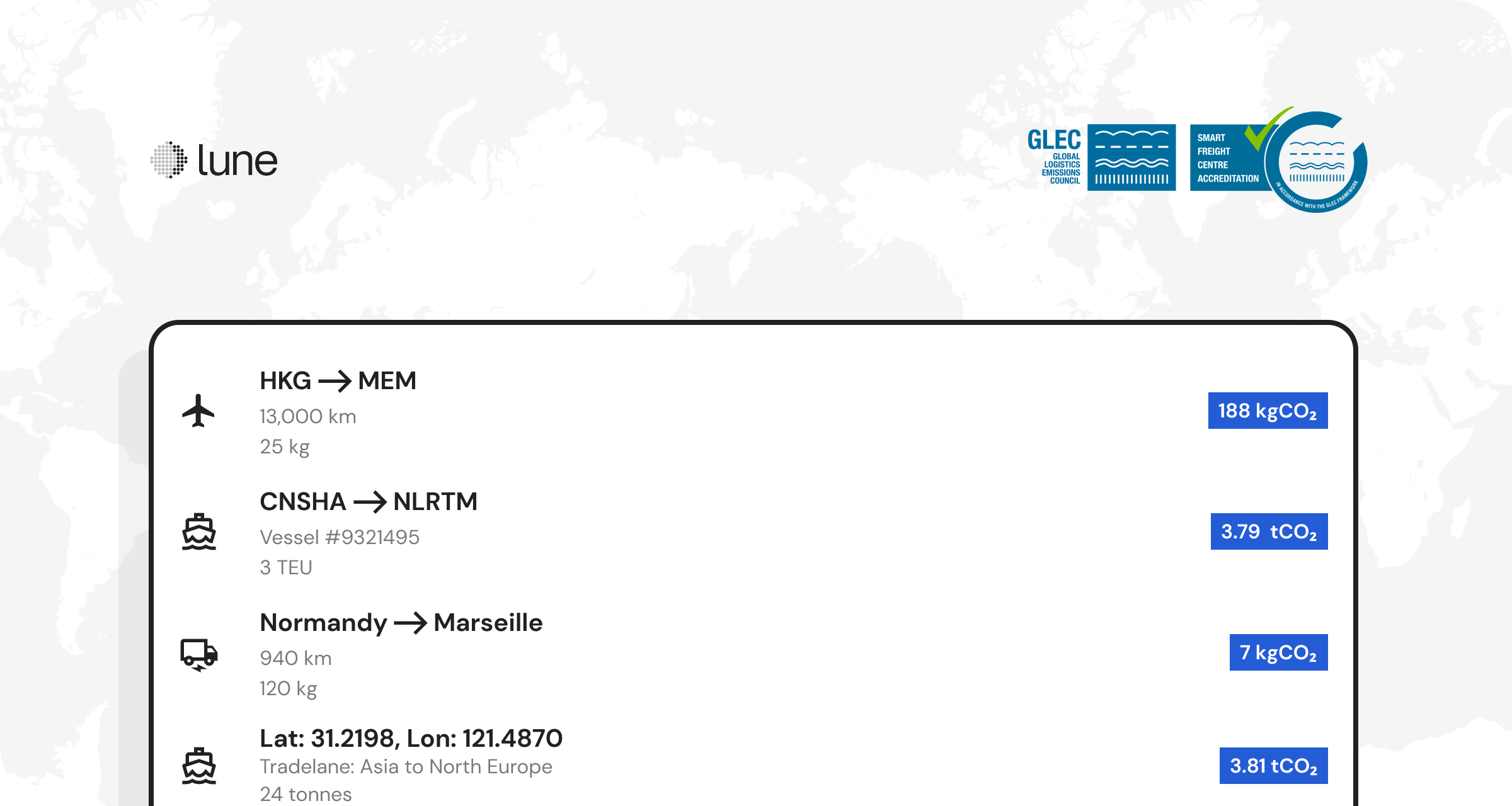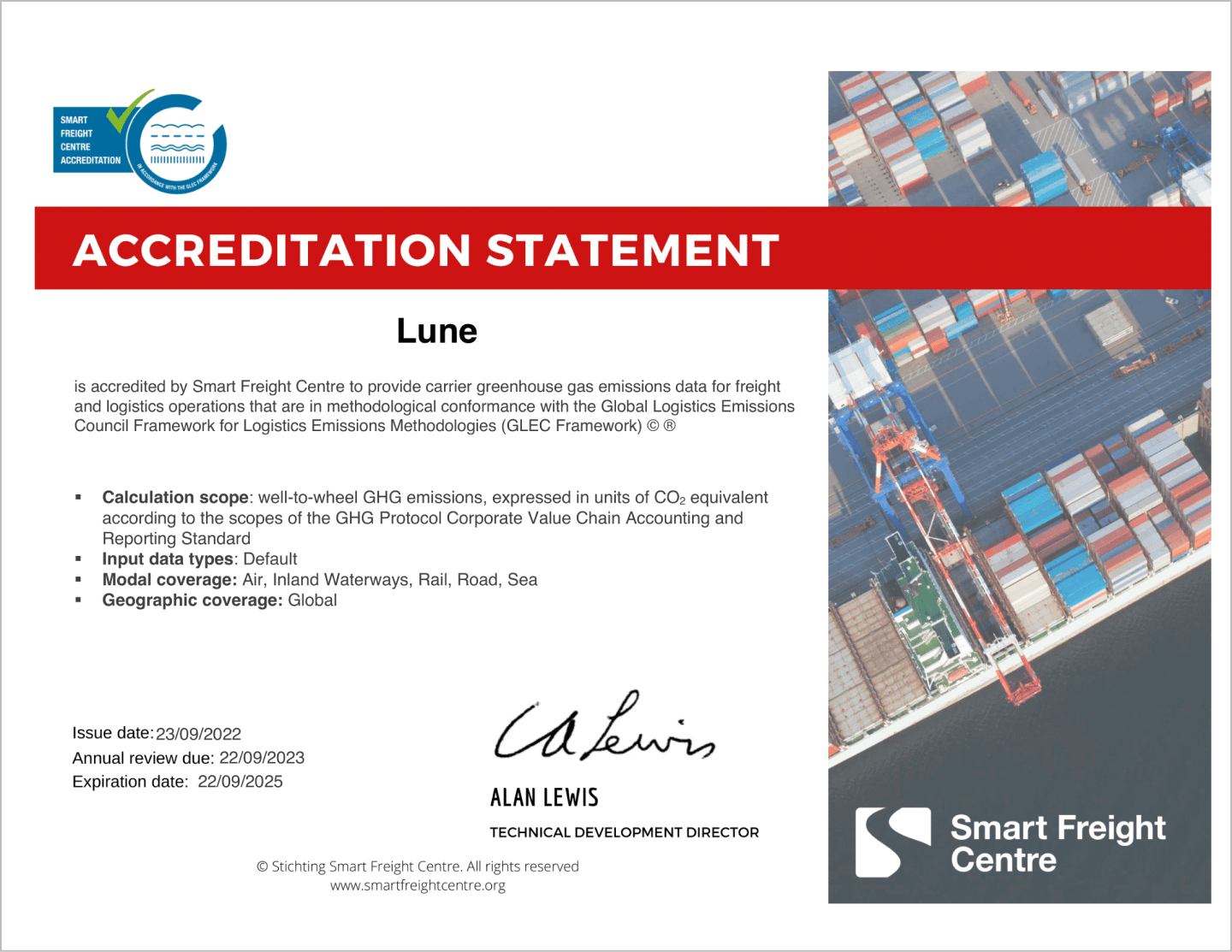

Logistics is an industry with potential to have exponential positive impact for the planet.
Why? Because logistics companies interact with a myriad of other businesses, providing them a service which is traditionally high in carbon emissions – transporting goods from A to B as quickly as possible. So, if sustainable logistics solutions are implemented, it could reduce emissions and create a positive impact across a whole host of industries.
But, as with any climate initiative, sustainable logistics solutions need to be approached in the right way to ensure they make a real, lasting climate impact – and with new corporate sustainability reporting regulations incoming, this is becoming more urgent.
The starting point is to ensure that calculations of the emissions from logistics activities are accurate, transparent, and consistent.
That’s why at Lune we’ve always aligned our logistics emissions calculations with the Global Logistics Emissions Council Framework for Logistics Emissions Methodologies (GLEC Framework) to ensure they’re as rigorous and accurate as possible. Now, our method is accredited by Smart Freight Centre – so logistics companies can be confident that our methodology is fully compliant with industry best practice.

Go to our accreditation statement >
Not only this, Lune’s API and platform also provides:
- Multi-leg logistics calculations with different shipment modes
- The flexibility to make more granular and higher level emissions calculations, depending on the data you have available – eg., container ship average or vessel-specific based on IMO number and fuel type
- The ability to easily and directly offset the calculated carbon emissions using the highest quality carbon projects
About the GLEC Framework
There are an abundance of different transportation methods, and most logistics companies use multiple modes of transport for a single journey. It’s hard to compare and align the emissions from these different modes, which means there has traditionally been a lack of consistency, accuracy, and transparency in logistics emissions calculations.
That’s why the Global Logistics Emissions Council (GLEC) developed the GLEC Framework: the only globally recognized methodology for harmonized calculation and reporting of the logistics GHG footprint across the multi-modal supply chain – making it easier for the logistics sector to move towards zero emissions together. It’s aligned with the Greenhouse Gas Protocol, the UN Global Green Freight Action Plan and CDP reporting.
Led by SFC, the Global Logistics Emissions Council (GLEC) checks and certifies the use of this GLEC Framework, to make sure that organisations using it are applying the framework correctly – so you can be sure that logistics emissions are being calculated accurately and based on industry best practices.

Popular insights
Popular insights



